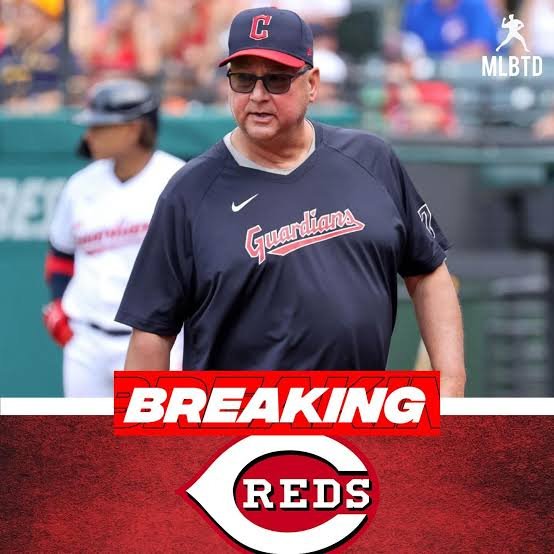Reds Head Coach Shocks Fans with Bold Game Plan: A Revolutionary Strategy Set to Redefine the Future of Baseball
In a move that has left the baseball world buzzing, the Cincinnati Reds’ head coach has unveiled a daring new game plan that could forever alter the landscape of the sport. The Reds, a team with a storied history, are now positioning themselves to revolutionize how the game is played. Fans and analysts alike are already debating whether this bold new strategy is the future of baseball or a risky gamble.
Historically, baseball has been a sport of tradition, with its well-established rules and familiar playbooks. From managing pitchers’ rotations to the art of batting, coaches have always relied on proven methods. However, the Reds’ head coach is taking an entirely different approach—one that emphasizes innovation, adaptability, and technology in ways that no team has dared to before.
At the heart of this bold strategy is a commitment to embracing data analytics to drive in-game decisions. The Reds have already invested in cutting-edge technology, giving them access to sophisticated tools that can predict everything from the optimal pitch sequence to the best defensive alignment against particular hitters. But this new plan goes beyond just analytics. It’s about using technology not only as a guide but as a backbone for all decisions, ranging from player development to in-game management.
One of the most eye-catching aspects of this new game plan is the emphasis on flexibility in player roles. The Reds are rethinking the traditional structure of their team, breaking away from the rigid positions that have been a staple of baseball for centuries. The team’s head coach has proposed the idea of multi-role players—athletes who can seamlessly switch between positions depending on the needs of the game. This idea challenges the status quo, where players are often pigeonholed into one position for the entirety of their careers.
For instance, pitchers may find themselves in the outfield if the situation demands it, or an infielder may be called upon to pitch in a critical late-game scenario. This unprecedented fluidity is designed to maximize the potential of every player on the roster, utilizing their full skill sets and preparing them to contribute in multiple facets of the game. The Reds’ coaching staff is already working with each player to develop the versatility needed to thrive in this environment.
While this might sound like an unconventional tactic, it’s a reflection of the head coach’s broader philosophy: adaptability. In today’s fast-paced, ever-changing world of professional sports, teams must be agile to succeed. Predictable strategies are no longer enough to guarantee victory. The Reds’ new approach reflects the idea that the game is evolving and that the best teams are those that can adjust their strategies on the fly.
Perhaps one of the most revolutionary aspects of this game plan is how it reimagines the relationship between managers, coaches, and players. The head coach has made it clear that his strategy is about fostering collaboration rather than dictating orders. Instead of simply telling players what to do, the coaching staff will work alongside the athletes to determine the most effective ways to approach each game. This emphasis on teamwork, communication, and mutual respect could lead to stronger bonds between players and coaches, and it might also help to build a more dynamic and cohesive team.
The Reds’ head coach is also placing a heavy focus on mental toughness. Baseball, often referred to as a game of failure, requires players to constantly bounce back from setbacks. In the past, many teams have prioritized physical training to ensure players are in top condition. While that is still important, the new plan includes a significant investment in mental training. The coaching staff will work with sports psychologists and mental coaches to help players develop the resilience needed to perform under pressure and stay focused during intense situations. This is particularly important in the postseason, where the mental fortitude of each player can make or break a team’s success.
The team’s approach to player development is also being overhauled. The head coach has introduced a more personalized system for nurturing talent, which places an emphasis on understanding the individual needs and goals of each player. Instead of applying a one-size-fits-all training regimen, the Reds are working to develop tailored programs that maximize the strengths of each athlete, while also addressing areas that need improvement. This is particularly important for the younger players on the team, who will benefit from a more customized approach to their growth and development.
As with any bold strategy, there are skeptics. Some critics argue that the Reds’ new approach could backfire, especially given the unpredictability of baseball. The team’s willingness to embrace a flexible approach is admirable, but it also carries risk, particularly when it comes to putting players in unfamiliar positions. The lack of specialization might lead to mistakes, and the reliance on technology could result in over-analysis and decision paralysis. However, those who support the Reds’ head coach argue that innovation is key to staying competitive in a sport that is becoming more and more data-driven.
In conclusion, the Reds’ head coach has introduced a bold and groundbreaking game plan that could change the way baseball is played. From embracing advanced analytics to introducing multi-role players, the strategy is designed to push the boundaries of what’s possible on the field. Whether this new approach will succeed remains to be seen, but one thing is for sure: the future of baseball could look very different thanks to the Reds’ willingness to think outside the box. This could mark the beginning of a new era in the sport, and other teams may soon follow suit in embracing this innovative approach.


